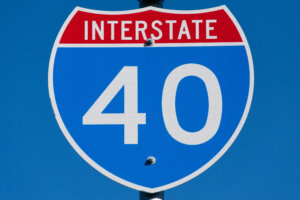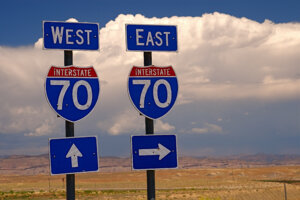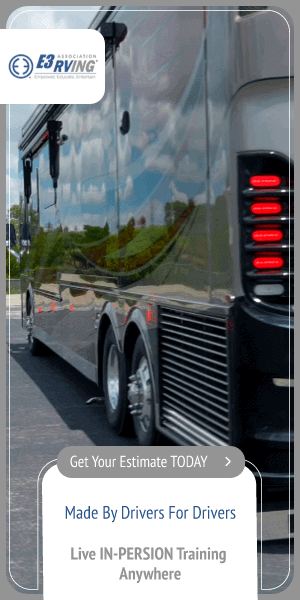Mastering RV Driving Challenges on I-10, I-40, and I-70 | RV Travel Tips
Navigating interstates like I-10, I-40, and I-70 as an RVer promises adventure, but RV travel tips are vital for success. As of March 19, 2025, these routes present unique challenges. Traffic congestion, poor road conditions, and construction zones test even seasoned drivers. This comprehensive guide dives deep into these difficulties. Additionally, it offers practical advice and insider secrets for safer, more enjoyable trips. Resources like E3 Rving provide expert support for your journey.
Why RV Travel Tips Are Essential for Route Planning
First, RVers cherish the open road’s freedom. However, not all interstates suit large vehicles equally. Specifically, I-10, I-40, and I-70 challenge drivers with traffic and road issues. Understanding these obstacles ensures safety and reduces stress. For example, RVs struggle in tight urban areas or on bumpy pavement. Proper planning transforms risks into rewards. Thankfully, tools like RV route planning resources simplify the process.
Moreover, route planning isn’t just about picking a highway. Instead, it involves anticipating hazards like low bridges or narrow lanes. Many RVers overlook vehicle size when plotting trips. Consequently, they face surprises like impassable routes. To avoid this, consider your RV’s height, width, and weight. Additionally, seasoned travelers recommend mapping stops in advance. This approach saves time and prevents frustration on the road.
Besides, weather plays a huge role in RV travel. For instance, winter snow on I-70 or summer heat on I-10 affects driving conditions. Checking forecasts alongside road updates is smart. Fortunately, websites like RV Life offer real-time data. Combining these RV travel tips ensures smoother, safer adventures.
Breaking Down Challenges on Each Interstate
 I-10: Mastering the Southern Route
I-10: Mastering the Southern Route
I-10 stretches from Santa Monica, California, to Jacksonville, Florida. Naturally, it’s a favorite for coast-to-coast RVers. However, heavy traffic plagues cities like Los Angeles, Phoenix, and Houston. Narrow lanes and aggressive drivers heighten accident risks. Meanwhile, flat terrain seems simple, but urban congestion overwhelms many. Surprisingly, complex interchanges in LA intimidate even experienced RVers.
For example, Los Angeles traffic peaks during rush hours. Navigating an RV through this chaos requires patience. Additionally, Phoenix’s sprawling layout includes tight turns near downtown. Meanwhile, Houston’s humidity and frequent roadwork add stress. To cope, travel during off-peak times like early mornings. Alternatively, use RV-specific navigation apps to dodge trouble spots.
Furthermore, planning overnight stops is crucial. Urban sprawl limits RV parking options. However, E3 Camping lists RV-friendly parks along I-10. For instance, campgrounds near Tucson offer water fill-ups and dump stations. Another tip is avoiding peak tourist seasons. Summer crowds clog I-10, especially near coastal endpoints. Instead, spring or fall trips ease the burden. Learn more from Campendium for campsite insights.
Interestingly, RVers often miss I-10’s wildlife hazards. Crossing rural Texas, deer or armadillos dart onto roads. Consequently, night driving demands extra caution. Keeping headlights bright and speeds moderate helps. These RV travel tips turn I-10 into a manageable journey.
I-40: Conquering the Middle Path
I-40 runs from Barstow, California, to Wilmington, North Carolina. Undoubtedly, its diverse landscapes draw RVers. The Mojave Desert, Colorado Plateau, and Great Smoky Mountains stun travelers. However, poor pavement east of the Mississippi frustrates many. Potholes and uneven surfaces threaten RV damage. Moreover, construction zones shrink lanes and delay progress. Steep grades in the Smokies test brakes and engines too.
For instance, Tennessee’s I-40 sections near Memphis suffer from neglect. RVers report jarring rides and tire wear. Similarly, Nashville’s truck traffic clogs lanes daily. Construction compounds these woes, especially in summer. Meanwhile, the Smokies’ winding roads demand focus. Downhill stretches overheat brakes if unchecked. To prepare, inspect tires and brakes before departure. Visit E3 Rving maintenance guides for checklists.
Additionally, fuel stops matter on I-40. Long desert stretches lack services. Thus, topping off in cities like Flagstaff prevents stranding. Another challenge is elevation changes. Climbing from Arizona’s flats to Tennessee’s hills strains engines. Regular oil checks avoid breakdowns. For repair advice, RV Repair Club offers tutorials. Timing travel outside construction peaks—like late fall—cuts delays too.
Besides, wind gusts in the Midwest surprise RVers. Open plains amplify crosswinds, swaying tall rigs. Slowing down and gripping the wheel tightly helps. Meanwhile, scenic stops like Petrified Forest National Park tempt detours. Balancing safety and sightseeing requires planning. These RV travel tips make I-40 a rewarding drive.
I-70: Navigating the Northern Route

I-70 spans Cove Fort, Utah, to Baltimore, Maryland. Clearly, it’s a solid transcontinental option. Compared to I-40, pavement quality varies widely. Indiana’s potholes and uneven surfaces jolt RVs. Construction near Indianapolis slows travel often. Still, fewer major cities than I-10 reduce traffic woes. Nevertheless, winter weather in the Rockies poses risks.
For example, Indiana’s I-70 near Terre Haute frustrates RVers. Rough patches bounce cargo loose if unsecured. Similarly, Denver’s mountain passes challenge novices. Snow or ice slicks roads unpredictably. However, summer brings smoother sailing east of the Rockies. To adapt, check conditions via RV Travel. Adjusting speed for weather keeps trips safe.
Moreover, I-70’s rural stretches offer peace but few amenities. Planning fuel and rest stops ahead avoids trouble. Kansas plains, for instance, stretch endlessly without services. Conversely, urban zones like St. Louis snarl traffic. Bypassing cities with parallel routes eases stress. Another perk is I-70’s heartland scenery. Rolling hills beat I-10’s urban grind for some. Weighing these factors tailors your trip.
Interestingly, construction trends show up yearly. Indiana’s roadwork peaks in warm months, narrowing lanes. Anticipating this via state DOT sites saves time. Meanwhile, Utah’s desert heat tests RV cooling systems. Carrying extra coolant prevents overheating. These RV travel tips ensure I-70 suits your rig.
Top RV Travel Tips for Interstate Success
Regardless of route, smart habits boost safety and fun. First, check road conditions daily. State DOT sites or apps provide updates. Next, use RV-specific tools like RV LIFE Trip Wizard. These avoid low bridges and tight turns. Additionally, maintain your RV religiously. Tires, brakes, and engines need regular care.
For emergencies, pack a toolkit and spares. Fuses, bulbs, and a jack handle breakdowns. Moreover, stock food, water, and a first-aid kit. Long delays happen, especially in construction zones. Meanwhile, rest breaks combat fatigue. Driving an RV tires you faster than a car. Stopping every two hours keeps you alert.
Besides, communication matters on long hauls. CB radios connect you to truckers for road intel. Alternatively, apps like Waze flag traffic jams. For more inspiration, explore RV Lifestyle for community-driven RV travel tips. Combining these strategies builds confidence. See additional advice at E3 Rving safety tips.
Hidden Gems for RV Travelers
Beyond basics, insider secrets enhance trips. For instance, Love’s Travel Stops welcome RVs. Dump stations, propane, and parking ease logistics. Similarly, bypass tough interstate sections with state highways. These quieter roads trade speed for comfort. Moreover, shoulder seasons cut crowds. Spring and fall offer mild weather too.

Additionally, urban navigation improves with RV apps. Tools like Campendium find bypasses around cities. For example, avoiding LA’s core on I-10 saves headaches. Another gem is overnighting at Walmarts or exploring unique stops via RV Lifestyle. Many Walmarts allow free parking—check local rules first.
Furthermore, rest area hacks save time. Some along I-40 offer picnic spots for quick meals. Meanwhile, trucker tips via forums reveal shortcuts. Timing fuel stops near cheaper stations cuts costs. These RV travel tips unlock a richer experience.
Trends Shaping RV Travel Today
Currently, traffic and road quality dominate RV challenges. On I-10, urban gridlock persists in LA and Houston. Reports show higher crash rates for big rigs there. Meanwhile, I-40’s pavement woes in Tennessee drag on. Construction zones multiply yearly too. Similarly, I-70’s Indiana stretches need repair often.
Interestingly, RV navigation tech grows fast. Apps now warn of hazards in real time. Additionally, post-pandemic RVing spikes traffic. Forums buzz with I-40 complaints and I-10 navigation woes. Consequently, planning tools gain popularity. Adapting to these trends keeps RVers ahead.
Drive Smart, Enjoy More
Ultimately, I-10, I-40, and I-70 test RVers uniquely. Traffic, roads, and construction demand preparation. However, RV travel tips turn hurdles into triumphs. Use E3 Camping for campsites and E3 Rving for prep. Start your RV adventure safely today!
“For more E3 Rving resources, be sure to visit: https://e3rving.com”

